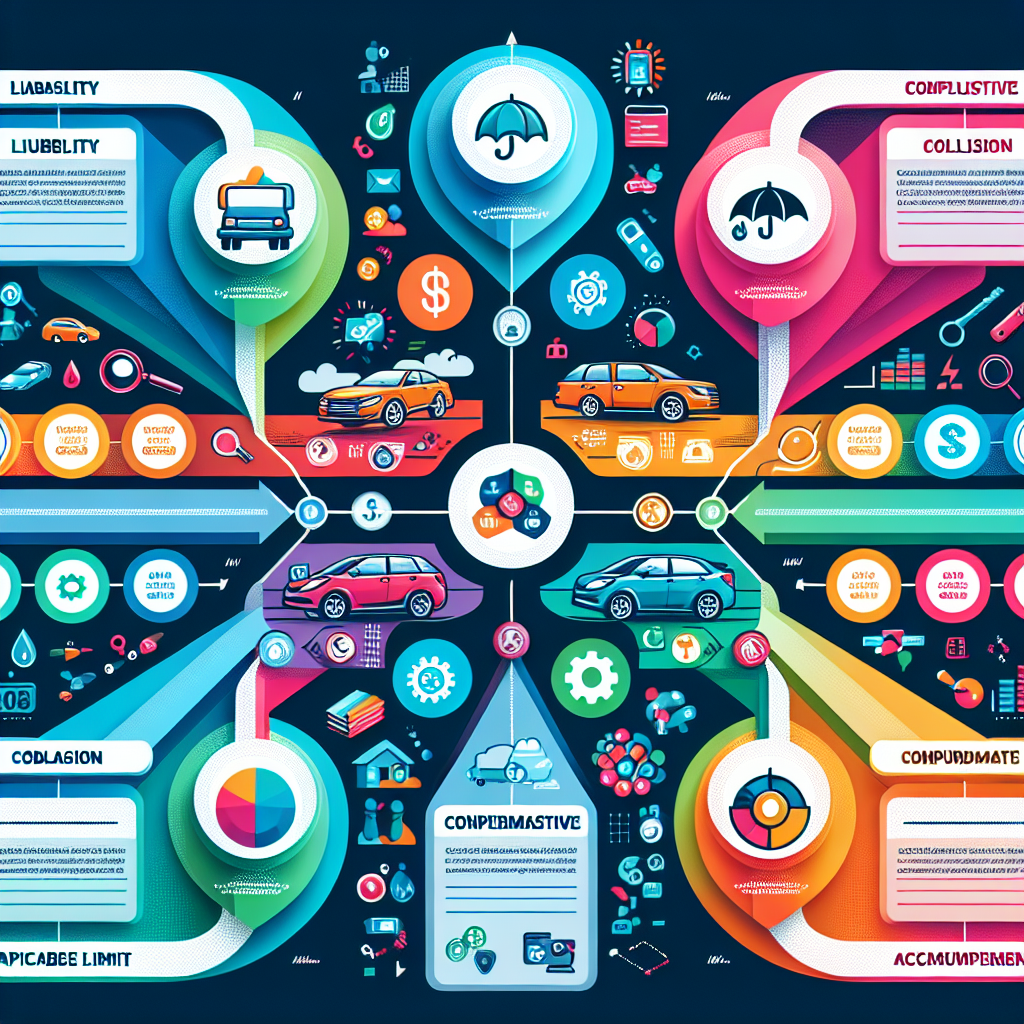Essential Insights at a Glance
- Liability coverage, encompassing bodily injury and property damage, is mandated by most states for all drivers.
- Depending on the state, uninsured/underinsured motorist protection, personal injury protection, and medical payments coverage may be either optional or compulsory.
- While collision and comprehensive policies are optional, lenders frequently insist on them for financed or leased cars.
- Additional add-ons like roadside aid, rental car reimbursement, new car replacement, gap insurance, and accident forgiveness might be available, varying by insurer.
Auto insurance breaks down into numerous distinct coverage types, yet not every motorist requires every variation. At its core, liability insurance—covering bodily harm and property damage—shifts your financial burden from accident costs to your insurer. Meanwhile, optional collision and comprehensive insurance safeguard your own vehicle from crashes with other cars or fixed objects, as well as theft, mischief, and extreme weather mishaps. The Bankrate insurance editorial crew has dissected these various coverages to empower drivers in making savvy policy choices.
Breaking Down the Usual Auto Insurance Categories
Typically, auto insurance segregates into two major groups: liability coverage (bodily injury and property damage) and first-party medical coverages—which, depending on the jurisdiction, may include personal injury protection (PIP), medical payments (MedPay), and uninsured/underinsured motorist protections.
Physical damage coverages like collision and comprehensive usually come as optional extras but often become a must-have when a vehicle is financed or leased. According to the Insurance Information Institute (III), nearly 80% of U.S. drivers carry these optional yet vital protections.
According to national statistics, approximately 78% of licensed drivers in the United States carry both collision and comprehensive coverage, reflecting a growing awareness of vehicle risk beyond liability.
The Backbone: Liability Coverage Explained
At the heart of every auto insurance contract lies liability insurance, which shoulders some of your legal and monetary obligations when you injure others or damage their property in an accident. Split mainly into bodily injury and property damage liability, this coverage also includes protection when the other party’s coverage falls short, known as uninsured/underinsured motorist coverage.
Liability insurance comes without a deductible and bankrolls expenses arising from lawsuits—including legal defense fees and settlements—up to your policy’s specified limits.
Bodily Injury Liability (BI)
Should you be held liable for injuries sustained by others in a collision, bodily injury liability kicks in to pay medical expenses up to your policy’s caps. Often structured with split limits, it typically sets one ceiling for an individual’s injuries and a separate total ceiling for all injuries per accident. For example, $25,000/$50,000 coverage means up to $25,000 per injured party and $50,000 overall per accident.
Real-Life Scenario
You run a red light and collide with another vehicle. The driver suffers whiplash, and their passenger breaks a leg. Both file claims under your bodily injury coverage. If your limits are $25,000 per person and $50,000 total, your insurer covers up to $50,000 combined but no more than $25,000 for each individual. Thus, if the passenger’s bills come to $26,000, only $25,000 would be paid for that claim.
Property Damage Liability (PD)
This coverage handles the repair costs for property you damage when at fault—not your own vehicle. Usually written as a single limit, a typical policy might offer $25,000 to fix things like other cars, utility poles, or buildings you hit.
Real-Life Scenario
You lose control on a slick patch of ice and crash into a streetlight, resulting in a repair bill of $5,000. With $25,000 in property damage coverage, you’re comfortably shielded from out-of-pocket expenses.
Uninsured and Underinsured Motorist Bodily Injury Coverage (UM/UIM)
When another driver’s liability coverage falls short or they have none at all, UM/UIM coverage picks up the tab for your medical bills exceeding their limits or in full when uninsured. Mandates on this coverage type differ by state and sometimes include vehicle damage if collision coverage is absent.
Real-Life Scenario
After an accident with an uninsured driver, you rack up $25,000 in medical bills. Carrying $25,000/$50,000 UM coverage means you can claim these costs through your own insurer, dodging out-of-pocket expenses.
Uninsured Motorist Property Damage (UMPD)
UMPD reimburses you for vehicle repairs when hit by an uninsured motorist. While mandatory in some states, elsewhere it’s optional or unavailable. It typically imposes payout caps and deductible rules, and most states require identifying the at-fault uninsured driver for eligibility—rendering it ineffective in hit-and-run cases.
Real-Life Scenario
Parked in a lot, your car is hit by an uninsured driver causing $700 damage. Thanks to UMPD with a $100 deductible on your policy, your insurer covers $600 for repairs.
Primary Medical Coverages
Personal Injury Protection (PIP)
PIP pays medical bills and potentially some lost wages for you and your passengers, regardless of fault, though this varies by jurisdiction. Unlike medical payments coverage, PIP is mandatory in no-fault states.
Example
A driver disregards a stop sign and crashes into you; your passenger incurs $4,000 in chiropractic bills. Your PIP coverage picks up these expenses.
Optional Protection: Insuring Your Vehicle
Collision and comprehensive insurance form the cornerstone for safeguarding your vehicle itself. The deductible—a set amount you cover before your insurer chips in—is key for both. Deductibles curb minor claims and help keep premiums down over time.
Example
You accidentally sideswipe another car while switching lanes, totaling $1,200 in damage. Your collision coverage includes a $500 deductible, so your insurer covers $700, while you’re on the hook for $500.
Comprehensive (COMP or OTC)
Beyond collisions, comprehensive protects against theft, vandalism, natural disasters, and animal strikes. Glass claims sometimes have lower or even zero deductibles.
Example
A deer rushes in your path, causing $7,000 in front-end repairs. With a $500 comprehensive deductible, your insurer pays $6,500, while you handle the deductible.
Additional Coverage Perks and Enhancements
Beyond the typical spectrum, insurers often provide extra options that offer tailored protections, such as medical payments coverage, gap insurance, new car replacement, roadside assistance, and rental car reimbursement.
Medical Payments Coverage (MPC or MedPay)
MedPay is an optional add-on covering medical expenses for you and your passengers no matter fault, available in select states. Unlike PIP, which is compulsory in no-fault states, MedPay excludes lost income or replacement services and usually has coverage limits between $1,000 and $10,000. It can also apply if a pedestrian is hit by a vehicle.
Example
An accident leaves you with whiplash costing $3,000. With a $5,000 MedPay limit, this coverage could cover your bill fully, though it doesn’t replace lost wages during recovery.
Gap Insurance
If you’re financing or leasing, gap insurance fills the gap between your vehicle’s current value and what you owe. This is especially crucial in the first few years when depreciation may outpace loan repayments.
Example
Your financed car has an actual cash value of $15,000, but your loan balance stands at $20,000. After a severe crash total and a $500 deductible, gap insurance could cover the $5,500 shortfall, sparing you from paying off a car you no longer own.
New Car Replacement Coverage
This optional protection replaces your totaled vehicle with a brand new one—not just a depreciated older model—if your car is relatively new or under a mileage threshold.
Example
Six months after buying a new car, an accident leads to a total loss. New car replacement coverage means you get a fresh vehicle, not a used equivalent, courtesy of your insurer.
Roadside Assistance Coverage
Different carriers package this coverage variously, but it typically includes towing, flat tire fixes, jump-starts, and locksmith services. Adding it to your policy might cost less than a standalone membership.
Example
During a long drive, your car breaks down. Thanks to roadside assistance coverage, your insurer dispatches a tow truck at zero cost to you.
Rental Car Coverage
Sometimes dubbed rental reimbursement, this coverage helps pay for a temporary vehicle while yours is in the shop due to a covered claim. Limits usually apply in terms of days or dollars.
Example
If you crash and your car requires two weeks of repairs, rental car coverage ensures you’re not left stranded by covering your rental costs up to a certain daily amount.
Finding Your Perfect Insurance Fit
Insurance needs differ wildly from driver to driver. Balancing coverage levels, budget, and priorities such as customer service and discounts is the secret sauce for smart policy shopping. Simply meeting minimum liability requirements might leave you exposed financially—especially as repair expenses climb and reckless driving incidents rise.
Pros often suggest boosting liability limits beyond state minimums and including comprehensive and collision coverage unless your vehicle has very low value or you’re financially equipped to replace it out-of-pocket. Beyond that, your unique circumstances dictate the best blend of coverages.
Not sure where to start? Comparing quotes from multiple insurers for the coverage limits that fit your needs can help you snag the best deal for your profile.
Frequently Asked Questions
Which car insurance company is the top choice?
No single insurer stands as the best for everyone; the ideal company depends on your personal driving record, location, and preferences.
How can I figure out the coverage amount I truly need?
Consulting with a licensed insurance agent can clarify your financial standing and what coverage levels suit your needs. Typically, carrying liability limits that protect your assets and income is wise. Additionally, if your vehicle is financed or leased, or you prefer not to pay for repairs yourself, comprehensive and collision coverage become essential.
Is it possible to cancel my insurance anytime?
Yes, you can cancel your policy whenever you want. However, dropping insurance without replacing it could breach state laws and raise future premiums due to coverage gaps. If you still drive the vehicle, ensure a new policy is active the moment the old one ends.
Can I purchase accident forgiveness?
Some insurers offer accident forgiveness, though it’s not universally available or legal in every state. Certain companies grant it as a reward to loyal, accident-free customers over time, rather than as a purchasable add-on.

